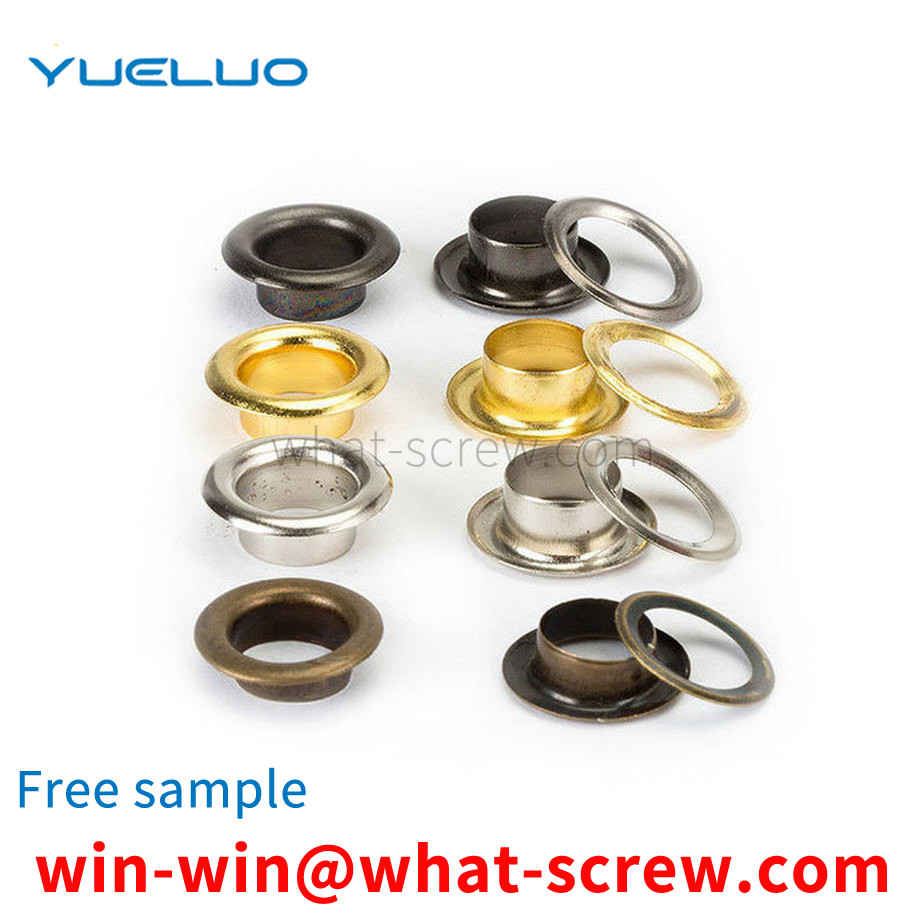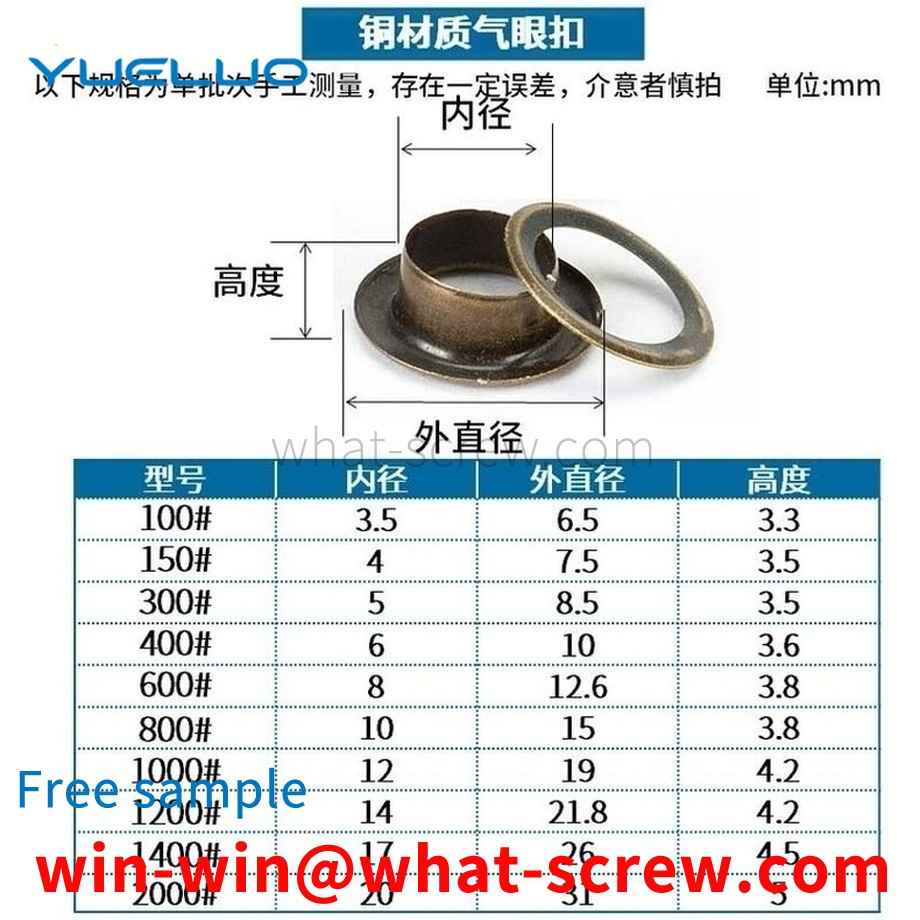In the prior art, the earliest rivets were small pegs made of wood or bone, and the earliest metal deformations were probably the ancestors of the rivets we know today. Without a doubt, they are the oldest known method of metal joining, dating back as far as the earliest use of malleable metals, for example: the Bronze Age Egyptians used rivets to attach six wooden sectors to the outer lines of a slotted wheel Riveted and fastened together. After the Greeks successfully cast large statues in bronze, they then used rivets to rive the parts together. With the progress of the times, there are more and more types of rivets, but traditional rivets have connection strength. Insufficient problem, so a new rivet is needed to solve the above problem.
Although there are many types of self-tapping locking screws, they all have the following main characteristics: (1) Generally, they are made of carburized steel (accounting for 99% of the total products). Also available in stainless steel or non-ferrous metals. (2) The product must be heat treated. Carbon steel self-tapping screws must be carburized, and stainless steel self-tapping screws must be solution hardened. In order to make the self-tapping screw meet the mechanical properties and performance required by the standard. (3) The product has high surface hardness and good core toughness. That is, inner softness and outer rigidity. This is a major feature of the performance requirements of self-tapping screws. If the surface hardness is low, it cannot be screwed into the matrix; if the toughness of the core is poor, it will break as soon as it is screwed, and it cannot be used. Therefore, inner softness and outer rigidity are the requirements for self-tapping screws to meet the performance requirements. (4) The surface of the product needs surface protection treatment, generally electroplating treatment. Some product surfaces require phosphate treatment (phosphating). Such as: wall panel self-tapping screws are mostly phosphating. (5) It is produced by cold heading process. It is recommended to use high-speed cold heading machine and high-speed thread rolling machine or high-speed planetary thread rolling machine to ensure product quality. The self-tapping screw produced in this way has a well formed head and high thread quality.
According to the force of the connection, it is divided into ordinary and hinged holes. According to the shape of the head: there are hexagonal head, round head, square head, countersunk head and so on. Among them, the hexagonal head is the most commonly used. Generally, countersunk heads are used where connections are required. The English name of the riding bolt is U-bolt. It is a non-standard part. The shape is U-shaped, so it is also called a U-bolt. There are threads on both ends that can be combined with nuts. It is mainly used to fix tubular objects such as water pipes or sheets such as automobile plates. Springs are called riding bolts because of the way they fix things like a person rides a horse. According to the length of the thread, it is divided into two categories: full thread and non-full thread. According to the thread type, it is divided into two types: coarse thread and fine thread. The coarse thread type is not displayed in the bolt mark. The bolts are divided into eight grades: 3.6, 4.8, 5.6, 6.8, 8.8, 9.8, 10.9, and 12.9 according to their performance grades. Among them, the bolts above grade 8.8 (including grade 8.8) are made of low-carbon alloy steel or medium-carbon steel and are heat-treated (quenched). + Tempering), commonly known as high-strength bolts, and below grade 8.8 (excluding 8.8) are commonly known as ordinary bolts. Ordinary bolts can be divided into three grades: A, B, and C according to the production accuracy. Grades A and B are refined bolts, and grade C is rough bolts. For connecting bolts for steel structures, unless otherwise specified, they are generally ordinary rough grade C bolts. There are differences in the processing methods of different grades. Usually the corresponding processing methods are as follows: ① The bolts of grade A and B bolts are processed by lathes, with smooth surfaces and accurate dimensions. High, rarely used; ②C-grade bolts are made of unmachined round steel, the size is not accurate enough, and its material property grade is 4.6 or 4.8. The deformation is large during shear connection, but the installation is convenient and the production cost is low. It is mostly used for tensile connection or temporary fixation during installation.
Referring to Figure 1, one end of the existing insert nut 1' is embedded in the injection molded part 2', and the other end is exposed to the injection molded part 2'. The insert nut 1' has opposite lower and upper end surfaces in the axial direction. The end face of one end of the insert injection molded part 2' is the lower end face. In order to reduce the resistance during hot pressing, the connection between the inner wall surface and the lower end surface of the insert nut 1 ′ is provided with an inclined surface. However, when the embedded nut 1' of this structure is hot-pressed, the hot melted glue will generate a shunt that rises along the slope, and then a convex peak is formed in the screw hole of the embedded nut 1', and the convex peak occupies the screw. The space in the hole prevents the screw 5' from being completely screwed in; at the same time, due to the shunting of the hot solder, the knurling of the inner nut 1' near the upper end face cannot be filled with the solder, which makes the inner nut 1' and the inner nut 1' and The injection part 2' is not firmly embedded. Therefore, the locking strength of the existing insert nut 1 ′ and the screw 5 ′ after being hot-pressed is relatively low.
In addition, the angle aluminum connection structure itself has structural defects of poor torsional and shear resistance, and many projects use larger insulating glass to meet the requirements of architects, resulting in a larger self-weight. In the event of a natural disaster such as an earthquake that will cause the curtain wall to shake violently, the bolts on the angle aluminum are prone to breakage, and the seismic performance is not good. Especially for the beam with the open structure, since the angle aluminum is installed in the opening cavity of the beam, the inertia moment of the beam is small, and the torsion resistance and shear resistance performance of the force are worse.
We have many years of experience in the production and sales of screws, nuts, flat washers, etc. The main products are: fine-tooth anti-thread caps, chain bolts, D4D5 polished rod fine half-tooth bolts, GB823 round head screws and screws and other products, we can provide you with The right fastener solution for you.



















 Service Hotline
Service Hotline




